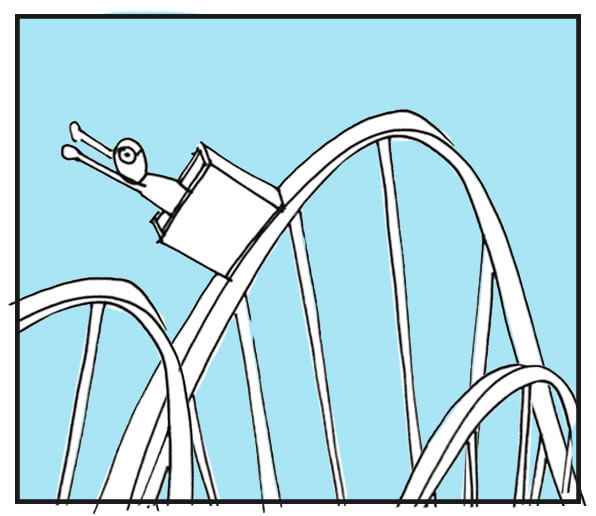Decision Making 101
When I sit down to write a blog post, I tend to see a near endless set of possibilities. This can be a wonderful gift because I love writing, and on the flip side it can also bring a feeling of being totally overwhelmed. ‘So many ideas. Where to start?’ It somehow feels like a big task to hit that first key, because I’m so focused on the end goal of putting my thoughts out in a graceful and clear way. It really used to block my flow, because I was so consumed by the idea of a ‘clean’ end result that I lost sight that the process behind it can be messy and chaotic.
When I saw this pattern emerging, I started going for walks with my phone to loosen up. Ideas come up as I move, and I use the talk-to-text feature to jot down thoughts in a stream of conscious style. Then when I get home, I sort through my notes to see where the dots connect and create a storyline. (I also play the game of what-in-the-world-did-I-say-to-make-autocorrect-write: ‘I don’t Nintendo’ ??) From there, the process flows much more smoothly. I allow myself to take just one step after another towards my goal instead of trying to leap directly into the finished product.
Anytime we have a goal or want to change something in our lives, the motivation comes from one of two places:
- movement AWAY from something we don’t want.
(negative outcome)- movement TOWARDS something we do want.
(positive outcome)
Both forms of motivation can be useful, and we generally to use a mix of these in our daily lives. As we know from experience, some strategies for motivating ourselves work quite well, and others seem to pull us back into the same ineffective patterns again and again.
Ineffective vs Effective Styles
With this in mind, it can be helpful to take a moment and examine the processes (or strategies) that we utilize in those non-productive situations. Researchers have identified four common ‘ineffective decision-making styles’ that trip us up and keep us in frustration:
1. The Negative Motivator:
You feel the motivation to act only after imagining the horrible consequences of what will happen if you don’t get moving. You often get these tasks done, but are miserable for most of the time.
2. The Dictator:
You give yourself “orders” in a stern, commanding voice like a military commander. When you hear that voice inside using words like must, have to, should, etc., it feels like your internal drill sergeant is on fire. Funny enough, often you find yourself rebelling against…yourself. No one likes to be talked to like that!
3. Imagine Doing It:
You imagine yourself doing a not-so-fun task and feel bad or frustrated at the time, energy, resource, etc. that the task will take. Often this strategy is strongly tied to struggles with prioritization.
4. Overwhelmed:
You imagine an entire project or activity as one giant mass of work, and feel bewildered at where to begin. There are so many possibilities and there is so much unknown between you and the finish line. (Hey! That’s me!)
(**Do you see yourself in one of these strategies above? Take a moment to think of a specific area where you see the ineffective strategy in action: fitness – work – chores?) All of these strategies generally get results, but they don’t promote a healthy and productive way of making the right decisions in the long term. Armed with an extra bit of awareness, we can start to examine how to dissect our processes to see if we can re-engineer and make it work FOR us instead of wearing us out.
1. The Positive Motivator:
Find the pot of gold at the end of the rainbow – what positive things happen if you complete this task? And don’t lie to yourself, there is ALWAYS one positive thing. If not, it’s time to re-examine if you really need to do the task at all. At the very least, one basic ‘happy’ is scratching it off the list with a big fat red pen! (or check mark if you’re the more reserved type.)
2. Choice is Power:
Even if it doesn’t feel like it, you always have an option on how to move forward. When we do something as simple as shift our language to one of choice (can, want to, choose to), it shifts our perspective to one of control instead of submission.
3. Imagine being free:
Imagine the feeling of completing the task. Or better yet, imagine what happens if you consciously CREATE space to the task instead of feeling like it’s taking time away from your other activities. Maybe taking out the trash becomes a chance to incorporate a walk around the block to get some fresh air.
4. Breathe:
Yes, there are loads of possibilities, and yes, it’s perhaps a grand task ahead of you. But even the climb up Everest begins with a single step. Take a deep breath and make a list of the tasks that need to be done – then identify the ‘next actionable item’ for the project. It is often as simple as a phone call or an internet search. One other thing to remember for this type of mind, there is often more than one good option – don’t sweat so much about which is ‘most right’ and trust your instinct.
Like with the blog writing, I saw a unhelpful pattern and simply gave myself permission to try out a new approach. When we allow ourselves to be curious and open to experimentation, our decision-making processes flow much easier.
Challenge of the day: How can you explore a new strategy for the goal/area you thought of above?


 Blog
Blog 



